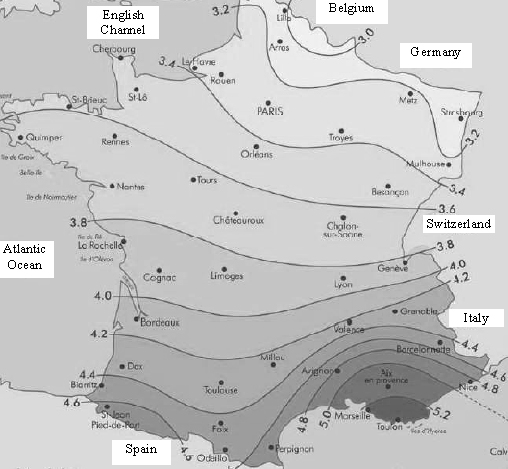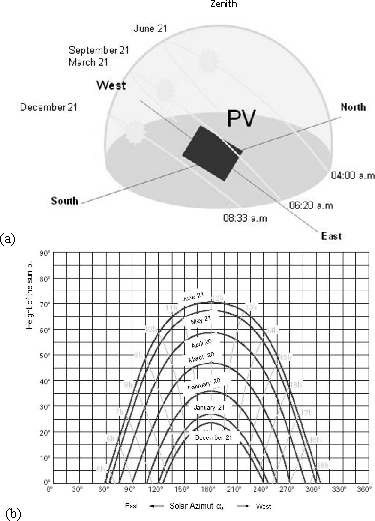2.2. Characteristics of the primary resource
The production of photovoltaic electricity depends on the following:
– The level of sunshine and the temperature of the place, and thus on its geographical location (especially the latitude) (Figure 2.3). By taking into account geographical and weather conditions, we can notice that the cumulative annual radiated energy, which is harnessed by a tilted plan facing south of the place latitude, varies between about 1,100 kWh/m2/year (average of 3 kWh/m2 per day with strong seasonal dispersions) in the North of France and about 1,900 kWh/m2/year (5.2 kWh/m2) in the South.
Figure 2.3. Average irradiation in France in kWh/m2/day on a tilted plan of the latitude value (fixed slope) and facing south (source: TECSOL)

– The season and the hour of the day (Figure 2.4). The production is maximum at noon by a sundial (sun at its zenith) with clear sky, because the crossed atmosphere thickness is less significant.
Figure 2.4. Sun path over a year: (a) [GER 08]; (b) [AST 08a]

– The orientation and slope of photovoltaic sensors (Figures 2.5 and 2.6). The best solution would be to follow the Sun path from East to West and to change the slope, so that rays remain perpendicular to the plane of capture. Figure 2.6 shows the optimal slope angle, depending ...
Get Electricity Production from Renewables Energies now with the O’Reilly learning platform.
O’Reilly members experience books, live events, courses curated by job role, and more from O’Reilly and nearly 200 top publishers.

